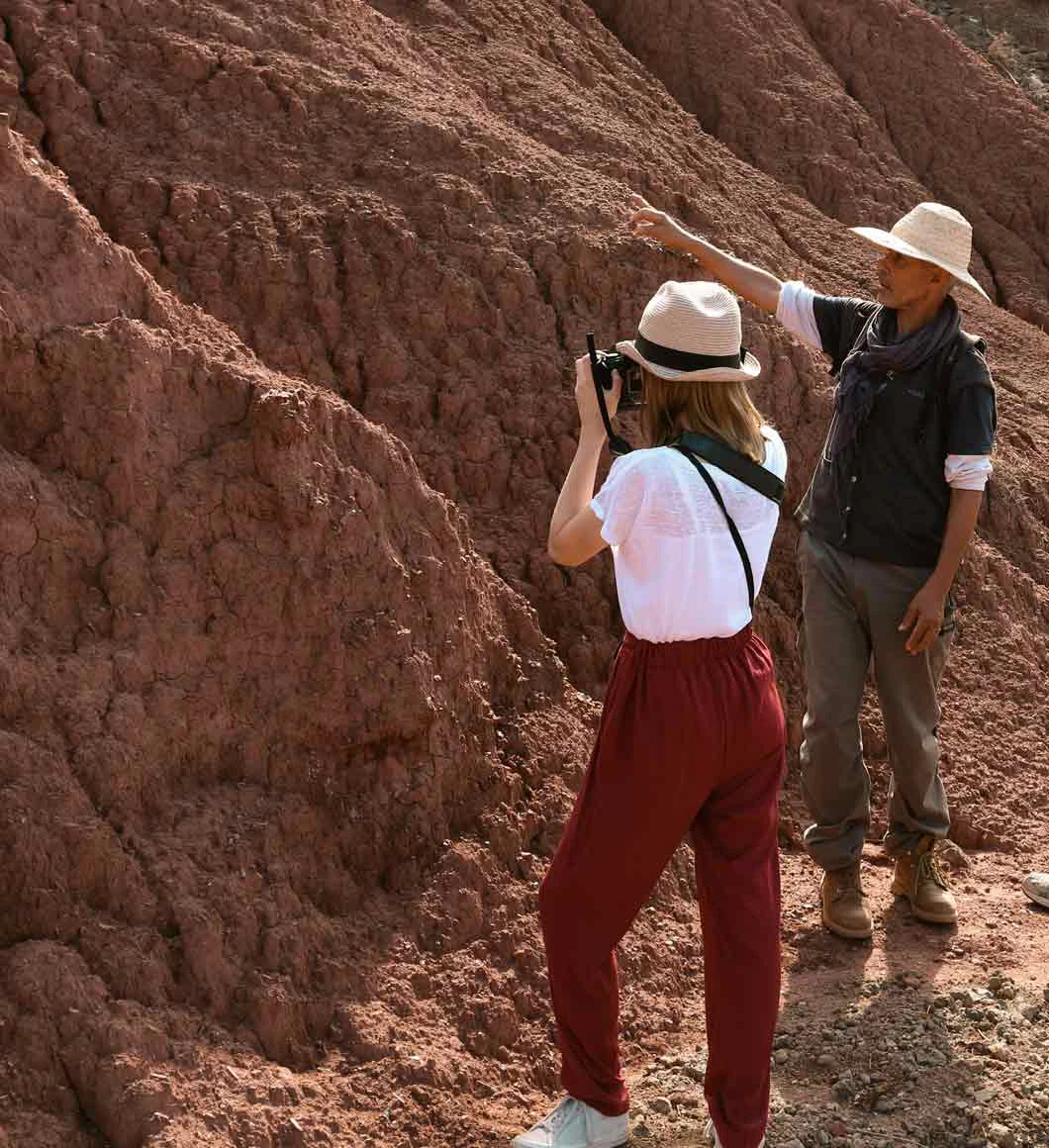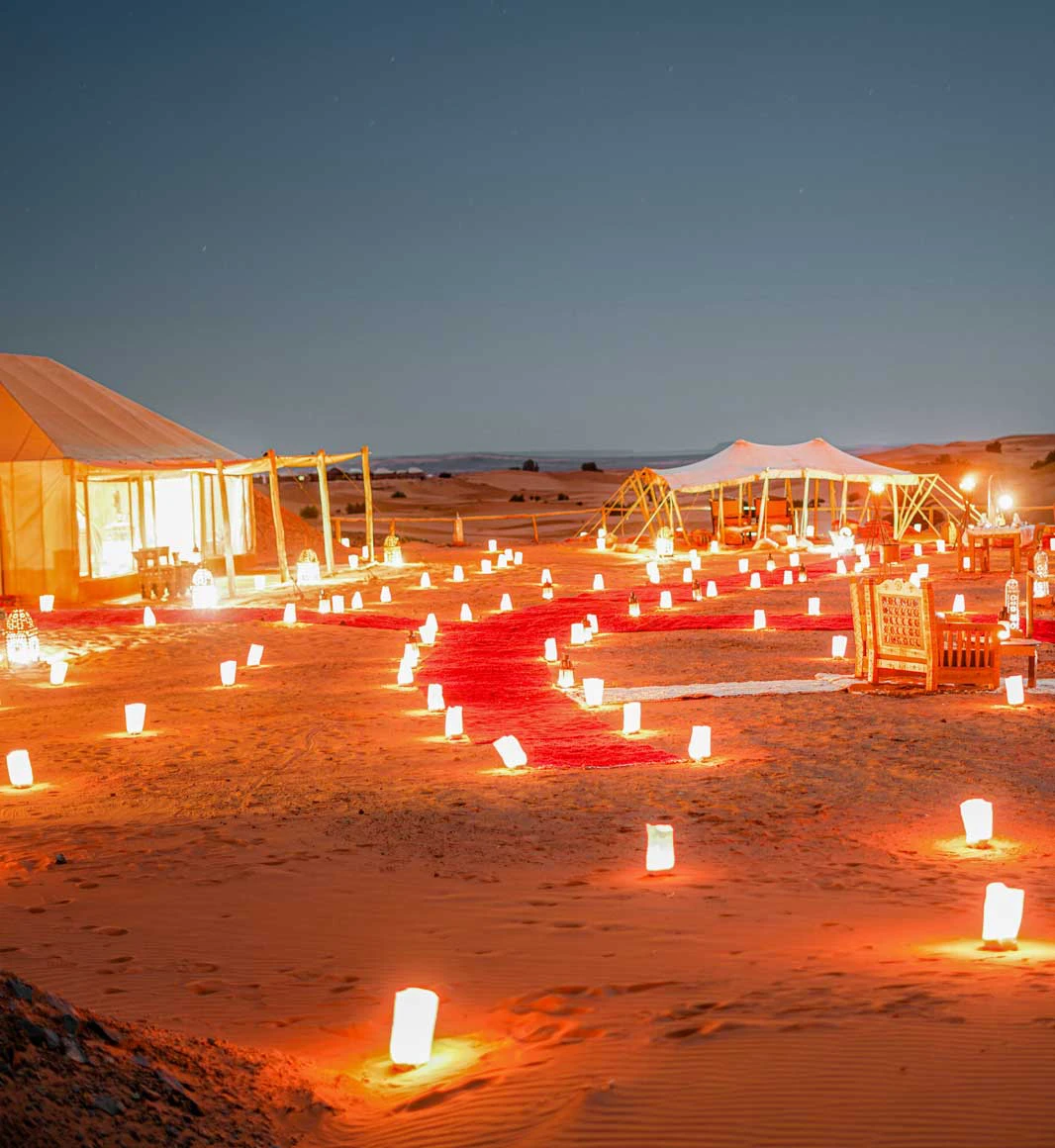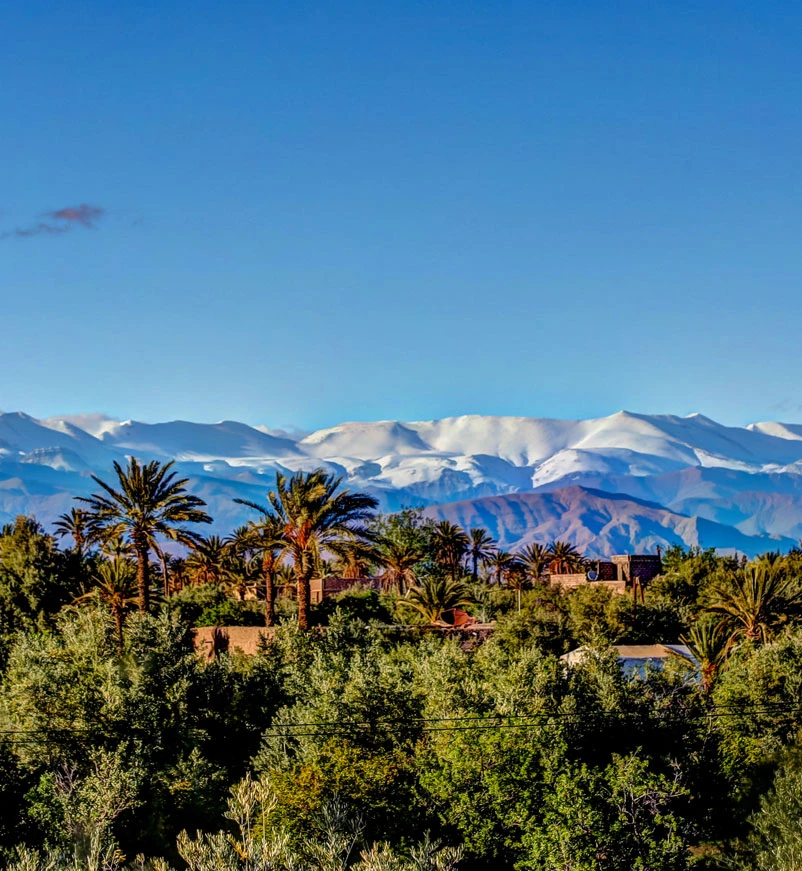
Where is Morocco?
Bordering Algeria and straddling Sub-Saharan Africa, Morroco is just a ferry ride from Southern Europe and the Mediterranean. Morocco is only a 3.5-hour flight away from the UK or Europe, making it perfectly feasible for a long weekend. From the USA, fly direct on Royal Air Maroc from JFK to Casablanca which takes just under seven hours.
Why visit Morocco?
The confluence of so many influences, Morocco is a total joy to visit. Every time I take a holiday to Morocco, I am met with a cacophony of colour, taste and sounds. During colonial times, it was both a French and Spanish protectorate, yet previously it had a long history of Islamic rule followed by Berber dynasties. This all makes for a wonderful melting pot of cultural influences which can be seen in Morocco’s lifestyle, food and decor. Morocco’s diversity is also inherent in its landscape. From bustling cities to the wave-pounded Atlantic shores, with craggy mountains giving way to rusty endless landscapes – this is a land of infinite variety. Despite visiting many times, the pull of Morocco always brings me back. With its breathtaking colours, lively people and expansive landscapes, amidst the haunting sounds of the daily call to prayer, Morocco offers opportunities to find tranquillity and immersion in its kaleidoscope of sights and sounds.
When is the best time to visit Morocco?
Morocco is a varied country so it is possible to visit all year round, depending on your interests. However, the best times are in April and May or September, October and November, when rainfall is lower and temperatures are favourable.
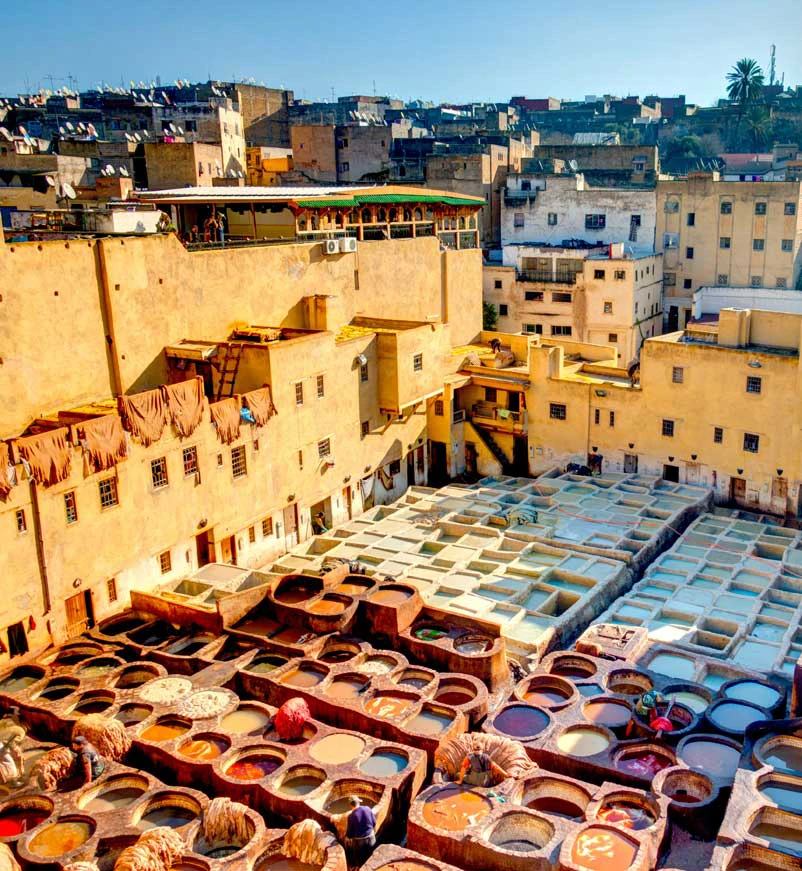
Tanneries in Fez
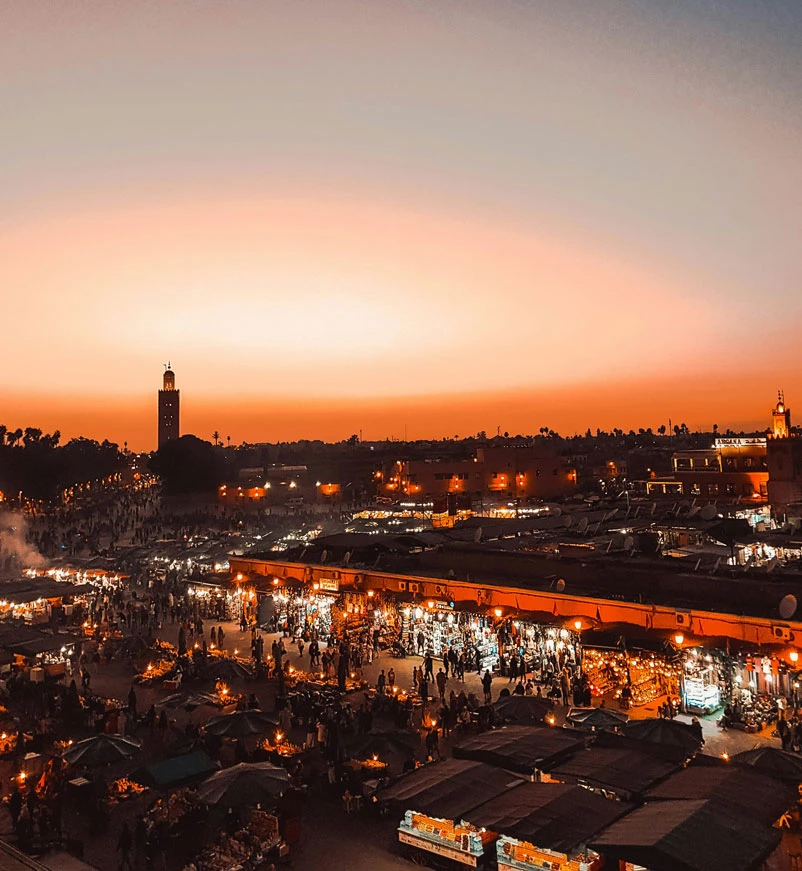
Jemaa el-Fnaa in Marrakech
"End the day at one of the city rooftop restaurants and watch the orange glow of the sun slowly sinking, bringing cooling breezes and muffled street sounds."
Top Destinations to Visit in Morocco
1. Fez – the spiritual heart of Morocco
Founded on the banks of the Jawhar River in 789AD, Fez acts as a fantastic introduction to Morocco’s culture. Numerous madrasas, mosques and zawiyas (religious schools) displaying stunning Moorish and Moroccan architectural styles still survive within the city gates. Visit the medina (a World Heritage Site) and navigate the narrow winding streets with a knowledgeable guide to avoid getting hopelessly lost.
Leather is still dyed in the traditional way here with ancient stone vats of colour below hanging hides drying in the sun a common sight. You’ll come across craftsmen hammering metal or stitching leather bags and slippers, and carpet sellers offering to barter over endless glasses of mint tea. Carpet weaving is a traditional craft in Morocco and styles vary dramatically from region to region and tribe to tribe.
When in Fez, I recommend taking a day to visit the ancient city of Moulay Idriss before walking amongst the Roman ruins of Volubilis. This is the best-preserved archaeological site in Morocco, with many beautiful mosaics preserved on site.
If you’re looking for somewhere to stay in Fez, my favourite hotel is the fabulous Palais Amani, a 17th-century palace with a shady orange-scented courtyard and sumptuous furnishings. Outside this haven, you’ll find soaring minarets, saints’ shrines, pungent tanneries – all in the labyrinth of little alleys that make up the souk.
2. Sahara Desert – spectacular and dramatic landscapes
Leaving bustling Fez behind, I love the contrast of spending a night in the footsteps of the nomads amongst the breathtaking sculptured dunes of the Sahara Desert. The Sahara is home to several camps with tents that are equipped with modern luxuries such as air conditioning, electricity, hot water and even bathtub jacuzzis.
Ride the last hour to your luxury camp on a camel before settling down beside a crackling campfire, listening to music and watching the stars emerge from the black velvet skies. Retreat to your luxury tent and drift off to the sound of silence. There is so much to enjoy in the Sahara from exhilarating activities like sandboarding and quad biking to guided walks on the dunes and discovering Morocco’s hidden fossil treasures in the desert town of Erfoud.
3. Skoura – a breathtaking oasis
I like to travel from the desert towards Marrakech along the former caravan route via Skoura, one of the mud-walled towns in the Valley of a Thousand Kasbahs. Here locals make their living from sheep, camels, dates and nuts. Houses are flat-roofed and plastered in orange mud, with little slits for windows.
I love to stay at Dar Ahlam, one of Morocco’s most exclusive hotels. Enter through a huge wooden door and step into an Arabian Nights world of passageways and intimate salons, fountained courtyards and cushioned alcoves where terraces lead to lush walled gardens. Days here can be shaped around your interests whether that be trekking into the Valley of Roses or driving to a 12th-century Berber village for a traditional tea ceremony at dusk.

Camp in the Sahara Desert & watch the stars emerge from the black velvet skies.
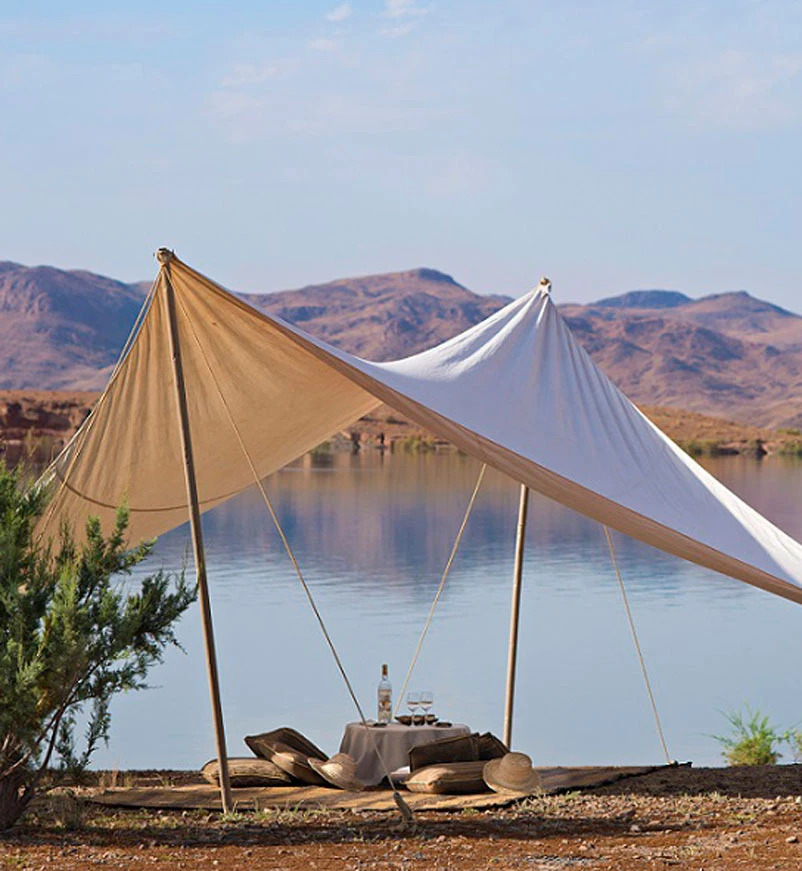
Stay at Dar Ahlem and enjoy personalised adventures.
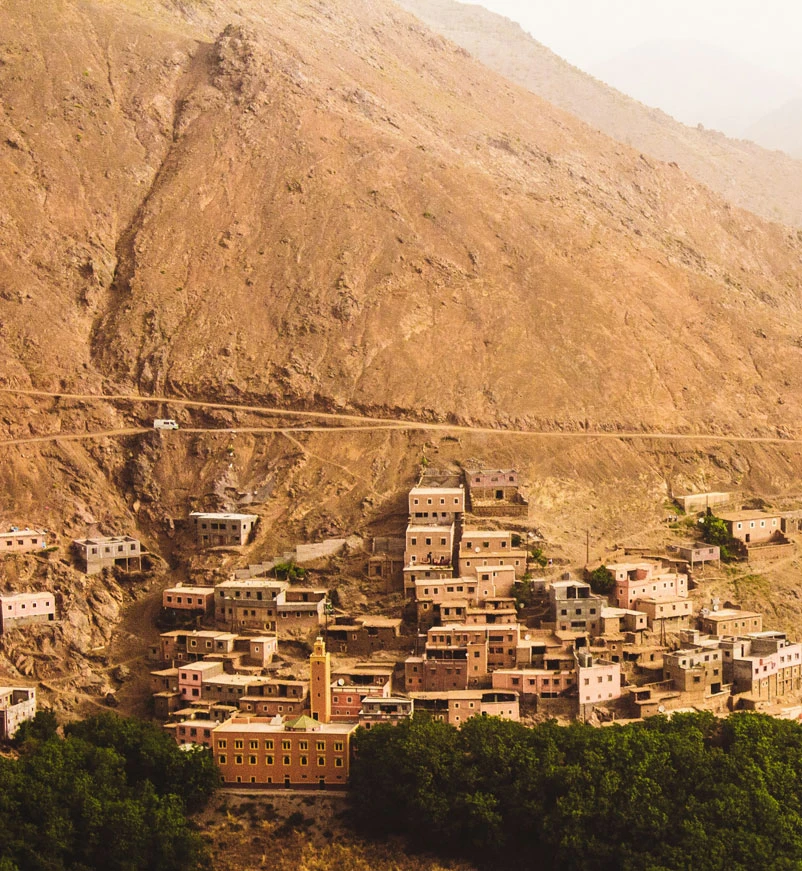
Journey to the hillside Berber village of Imlil in the Atlas Mountains.
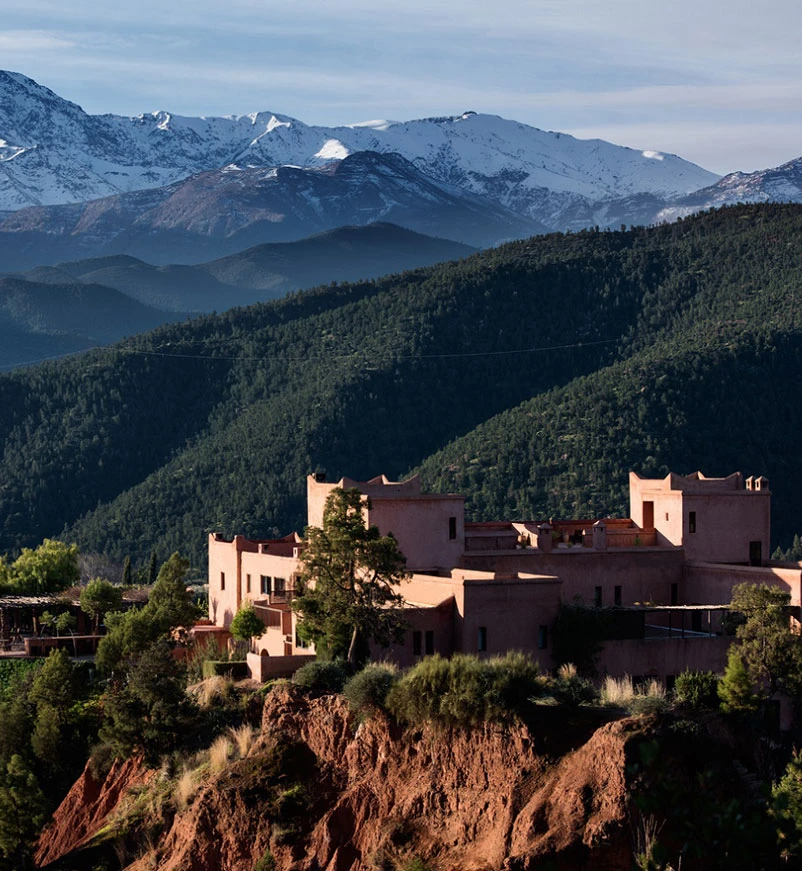
Stay at Kasbah Bab Ourika, a unique boutique hotel with 360-degree panoramic views,
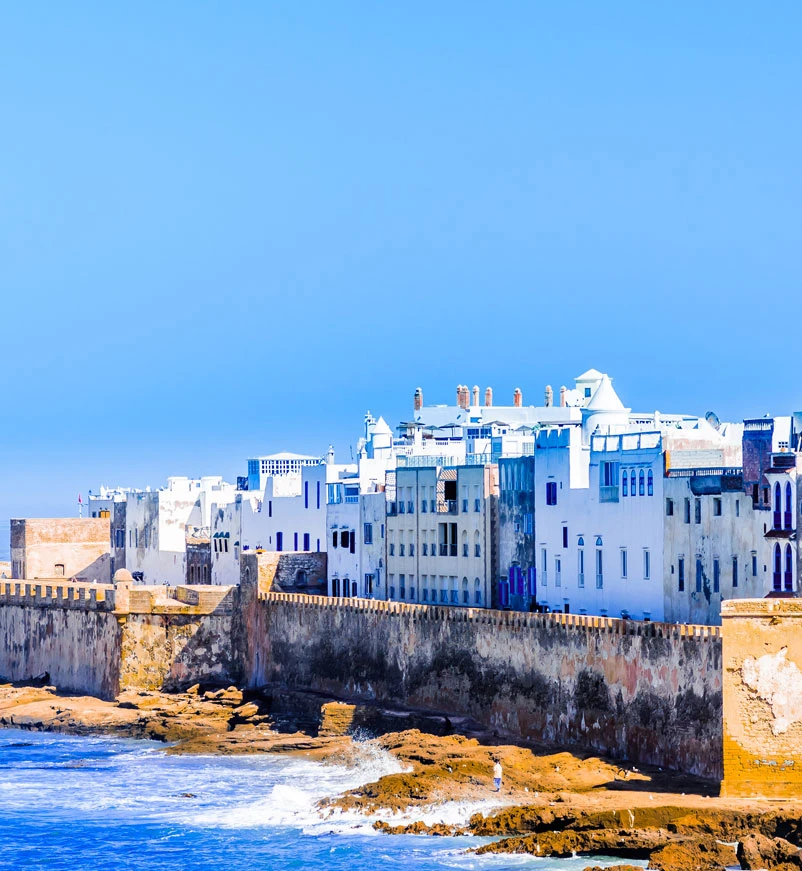
Visit the charming fishing town of Essaouira.
4. Marrakech – historic charm & vibrant streets
Home to endless stalls cooking mouth-watering tagines and tradesmen selling anything from carpet to lanterns, Marrakech is a myriad of sights, sounds and smells. There is so much to see and do here that no two days will be the same. Spend a morning in a horse-drawn carriage visiting some of the wonderful gardens such as Yves Saint Laurent’s oasis of colour, Jardin Majorelle, before gathering fresh herbs and vegetables and learning to cook local dishes with a chef. Or explore the labyrinth of narrow alleyways in the souk with a guide who can recommend where to buy the best rugs or handmade leather. Perhaps you might wish to take a guided bike tour whilst supporting a non-profit organisation which aims to empower young Moroccans through its ‘Bicycle Centres’,
As evening falls, the main square (Jemaa el-Fnaa) comes alive with snake charmers, music makers and colourful stalls selling mounds of spices. End the day at one of the city rooftop restaurants and watch the orange glow of the sun slowly sinking, bringing cooling breezes and muffled street sounds.
If you’re looking to stay in Marrakech, I recommend Riad Farnatchi, a boutique hotel in the heart of the Medina with 10 spacious suites and an award-winning spa and restaurant. For a more peaceful retreat, head 20 minutes outside the city and spend several nights at the exclusive Dar Zemora. This beautiful country house-style boutique hotel is set in spacious grounds with only seven suites. Each room has been lovingly decorated with fabulous paintings, Moroccan artefacts and comfortable furnishings. Relax by the pool, stroll amongst the palm trees in the beautiful garden and enjoy the peaceful contrast away from the frenzy of Marrakech.
5. The Berber villages of the Atlas Mountains – rugged landscapes & ancient traditions
From Marrakech, drive up into the Atlas Mountains, which stretch from north-eastern Morocco to the western region near Agadir. The Berber people (traditionally nomadic from the Sahara) have their own language and traditional beliefs and make wonderful guides for hiking in the mountains. Journey to the hillside Berber village of Imlil high up in the mountains for a guided hike through the mud-clad villages in the Ourika Valley and enjoy views of olive and walnut groves and goats hopping onto low stone walls whilst learning about the crops being tended to in the terraced fields.
If you’re considering staying in the Atlas Mountains, I highly recommend Kasbah Bab Ourika, a unique boutique hotel with 360-degree panoramic views, lush gardens and a secluded swimming pool. Indulge in a spot of pampering at the spa or hike up into the mountains with a picnic carried by Pepita the donkey. There are also opportunities to take longer treks to the salt mines in the National Park or visit a local Berber family for a cup of mint tea. Another favourite spot to stay is Kasbah Tamadot, a magical retreat owned by Sir Richard Branson with views up to Mount Toubkal, beautiful Berber tents and brand-new riads which are overflowing with character.
6. Essaouira – laid-back coastal city
Just 2.5 hours away from Marrakech, the charming fishing town of Essaouira is worth visiting for its fantastic variety of architectural styles and cultural influences. Once a Portuguese fortress, this ancient port has been used as a trading post since the 5th century BC. The Portuguese built the Castelo Real de Mogador here which was later taken by locals when the Portuguese abandoned many of their settlements on this coast. Modern Essaouira was built in the 18th century by a Berber king using European architects and engineers.
Take a walk through the medina to see the many artisan craft shops, including the wood carving workshops, before stopping at the harbour to see the blue boats moored and the fishermen coming with their catch of the day.
When staying in Essaouira I favour the chic hideaway, Villa Maroc. Ideally located at the edge of the Medina, the villa is composed of four traditional riads overlooking the ocean and the harbour. From the villa, you can sample the best of Essaouira; from visiting olive groves or enjoying a homemade picnic on a secret beach to taking a guided shopping tour with a local who can show you the best Moroccan rugs or finely made pottery. You could also spend the day with Villa Maroc’s head chefs who will take you to the souk to gather ingredients before heading back to the kitchen and learning to cook dishes that you can recreate at home.
Ready to take the road less travelled?
